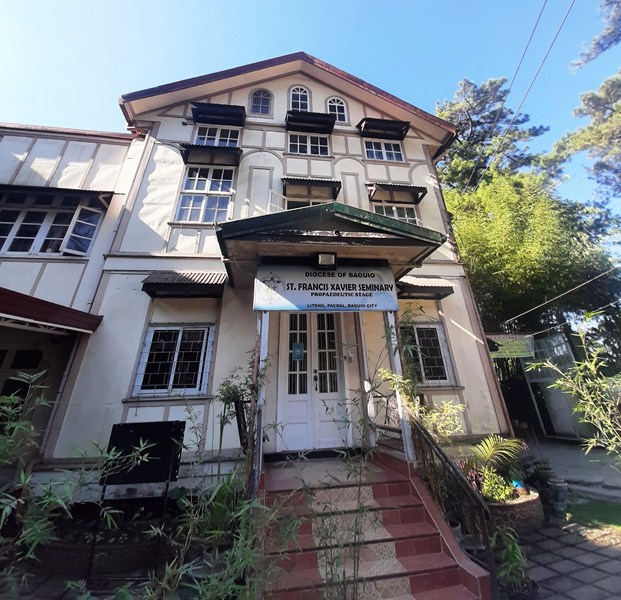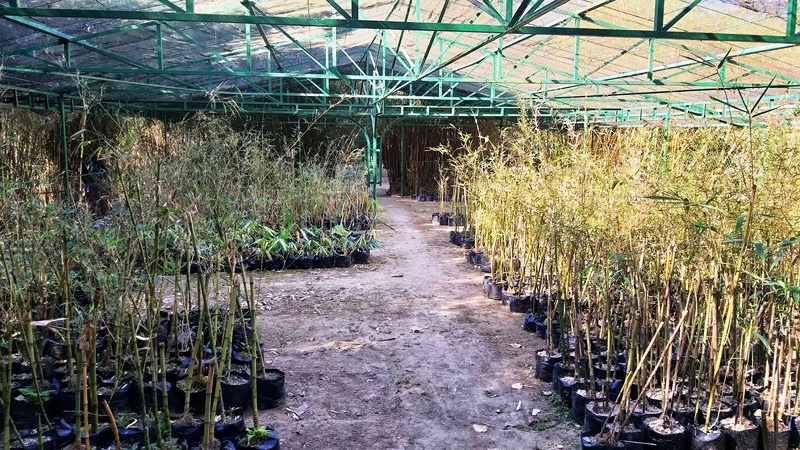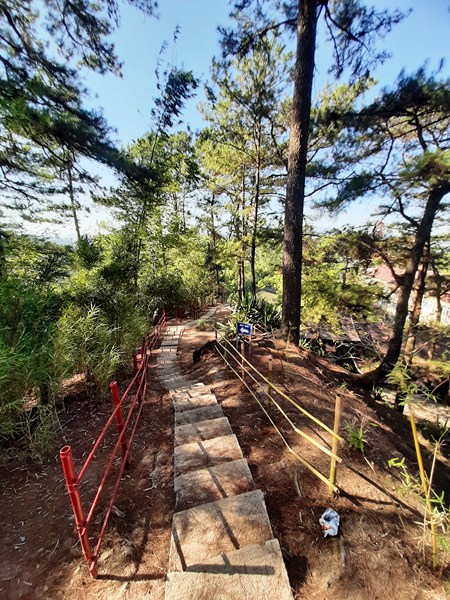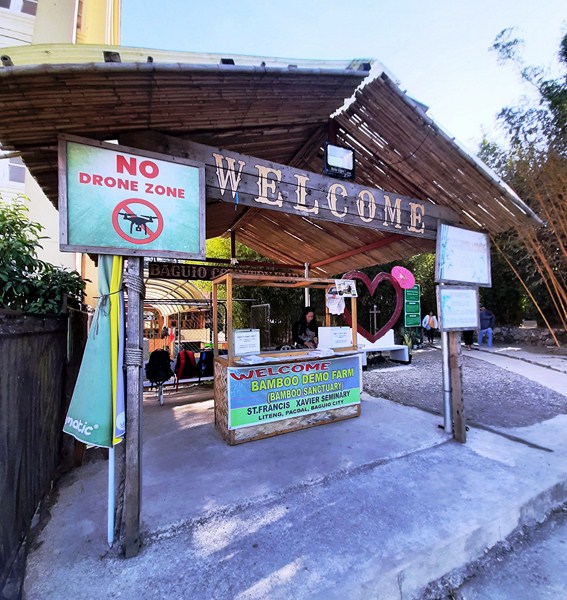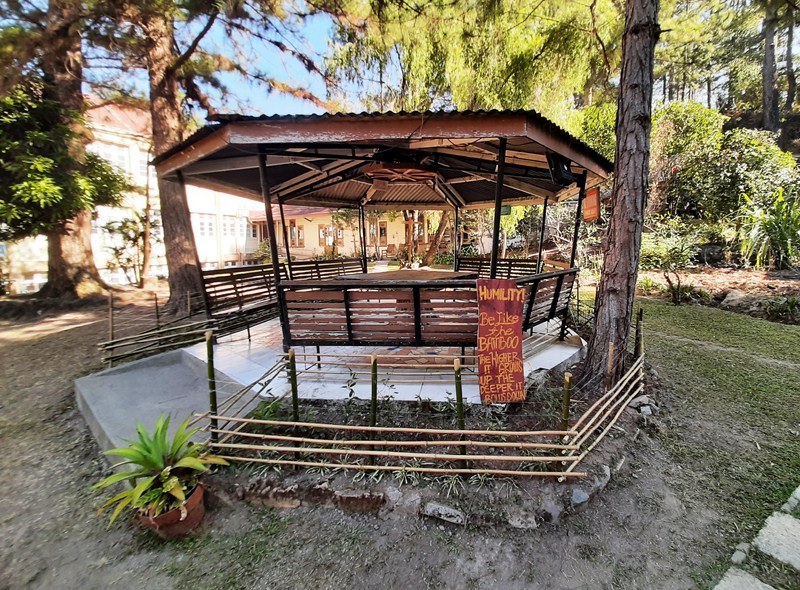The tranquil, 3-hectare and very Instagrammable Baguio Bamboo Educational Demo Farm (also called the “Little Kyoto” and the “Kawayan Ecopark”), a nature reserve within St. Francis Xavier Seminary, stands on the former site of the Irisan (Baguio City’s largest barangay) open dumpsite.
The bamboo farm, part of the legacy environment program of the late Bishop Carlito Joaquin Cenzon (1939 – 2019), C.I.C.M., D.D., was established in 2011.

Alphonse Karr Hedge Bamboo (Bambusa multiplex “Alphonse Karr”) is a strikingly beautiful clumping bamboo variety noted for its vibrant and uniquely colored culms.
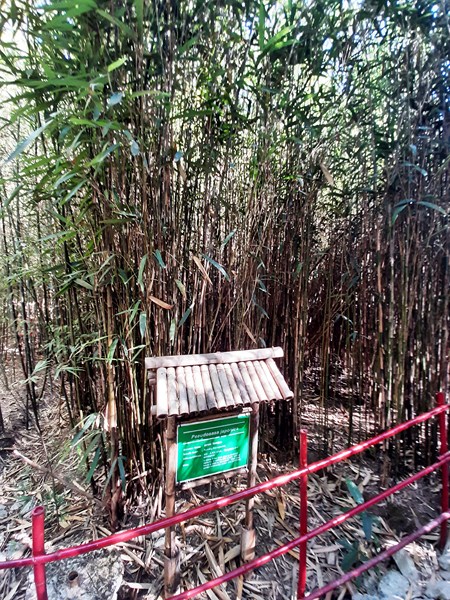
Arrow Bamboo (Pseudosasa japonica) is a vigorous bamboo that forms thickets up to 6 m. (20 ft.) tall, with shiny leaves up to 25 cms. (9.8 in.) long.The culms are typically yellow-brown and it has palm-like leaves.
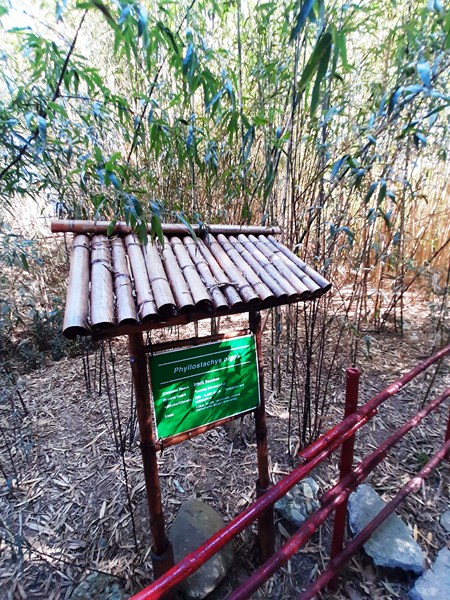
The legendary Black Bamboo (Phyllostachys nigra), the first hardy oriental bamboo, was introduced to the world in 1827, A true masterpiece of nature, it embodies grace and sophistication in every aspect.
The Kawayanihan sa Benguet is an environmental project of the Philippine Bamboo Foundation, Inc. (headed by Pres. Edgardo Manda), in collaboration with the Diocese of Baguio’s Commission of Environment.
This popular tourist destination, where people can relax and enjoy nature, has paved trails, a bamboo nursery, a bamboo bridge and a meditation garden.
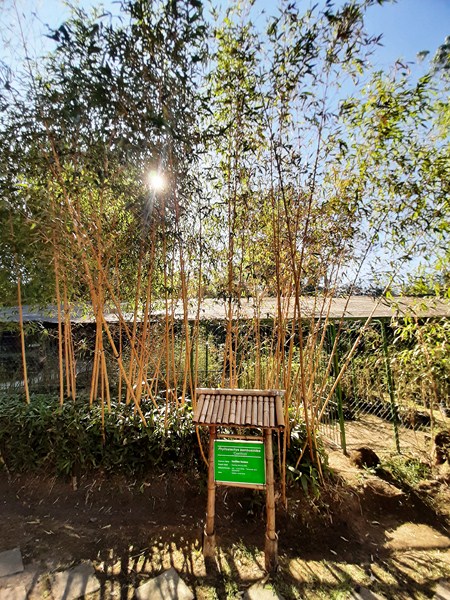
Castillon Bamboo (Phyllostachys bambusoides), bright yellow at sheath fall, is one of our most beautiful bamboos. This bamboo flowered, along with Phyllostachys bambusoides, in the 1960s. It was saved in China and Japan, from where it was re-imported to Germany and then, into the United States, by The American Bamboo Society. It is slower spreading than most other Phyllostachys.
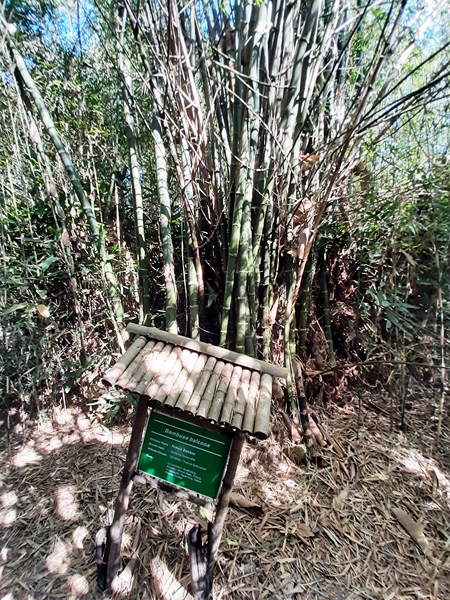
Female Bamboo (Bambusa balcooa), a tropical clumping bamboo originating from Northeast India, is often used as a food source, in scaffolding, for paper pulp or wood chips.
One of two bamboo plantation sites in Baguio City (the other is the Mirador Heritage and Eco-Park at Dominican Hill), it was opened in late 2019 but was gaining traction with local tourists in March 2020 when the COVID-19 pandemic started and the park had to be closed.
Check out “Mirador Heritage and Eco-Park”
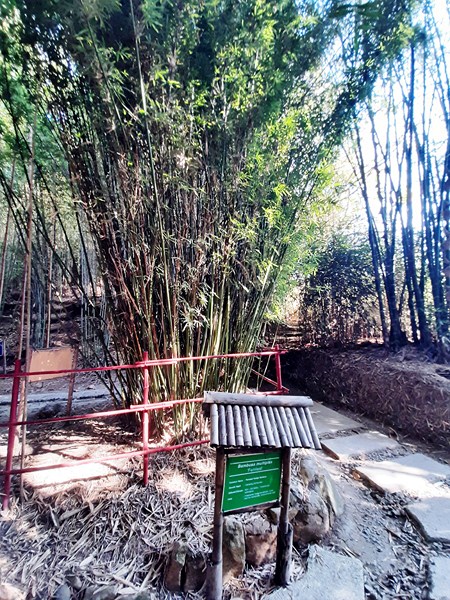
Fernleaf Hedge Bamboo (Bambusa multiplex) is, because of its thick nature, is highly prized as a short, thick, deer-resistant hedge.
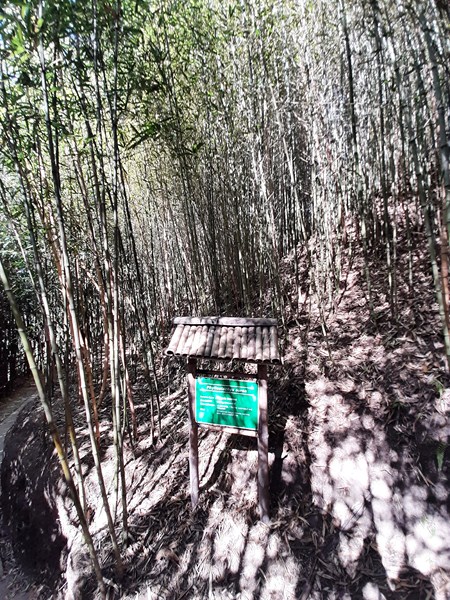
Fishpole Bamboo (Phyllostachys aurea) is a strong but graceful evergreen bamboo with tall, upright, bright green canes changing to yellow-green with age.
In November that same year, a few months after its reopening, it was temporarily closed due to vandals engraving their names and words on various bamboo culms (or poles) as well as urinating along the pathways.
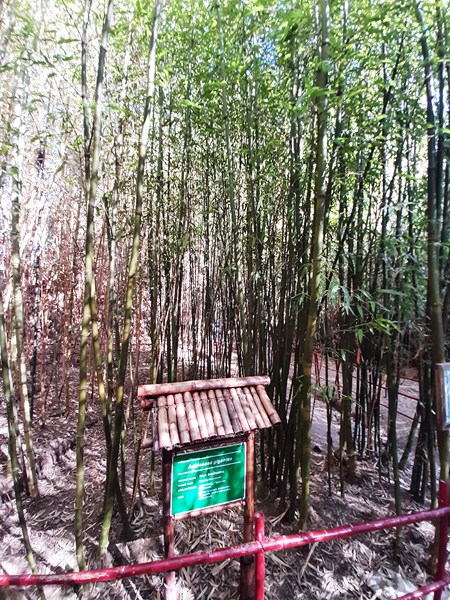
Giant Sour Bamboo (Acidosasa gigantea), found primarily in Southern China, with 1 species in Vietnam, its name is formed from Latin acidum (“sour”) and Sasa (another bamboo genus), referring to its edible shoots.
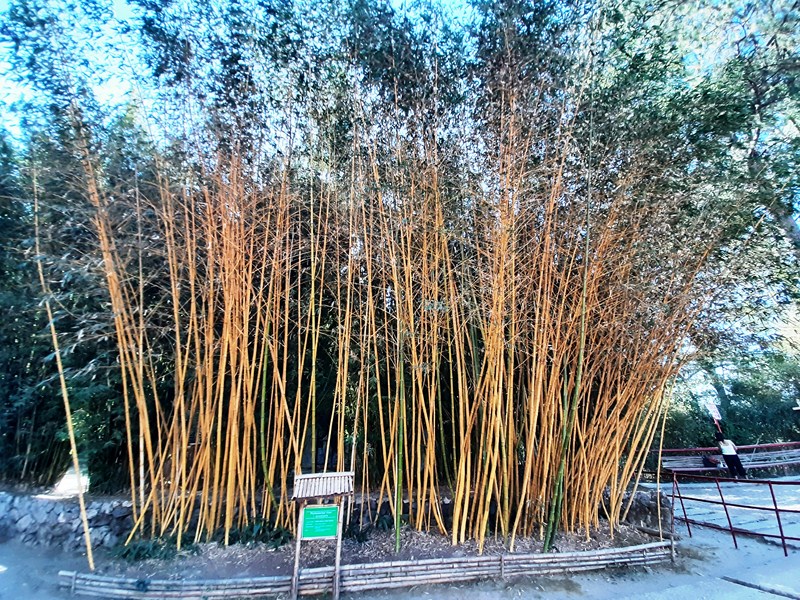
Golden Chinese Timber Bamboo (Phyllostachys vivax), one of the hardiest timber bamboo is, in most circumstances, will mature to 45 feet in height, with 3-4 inch diameter canes.
To showcase the beauty and diversity of bamboo, there are a number of walking trails (Aurea Trail, Vivax Trail, Cardio Trail, Dulcis Trail, etc.) that you can follow where pathways are lined with lush bamboos trees and bordered by vibrant red bamboo fences.
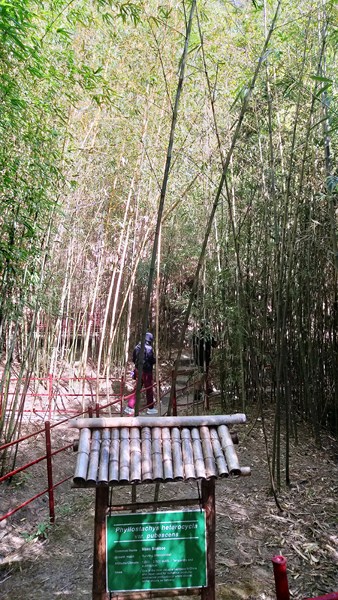
Moso Bamboo (Phyllostachys heterocycla), the most common source of bamboo timber in China for manufacturing and bamboo textiles, grows best in temperate climates, or cool sub-tropical regions.
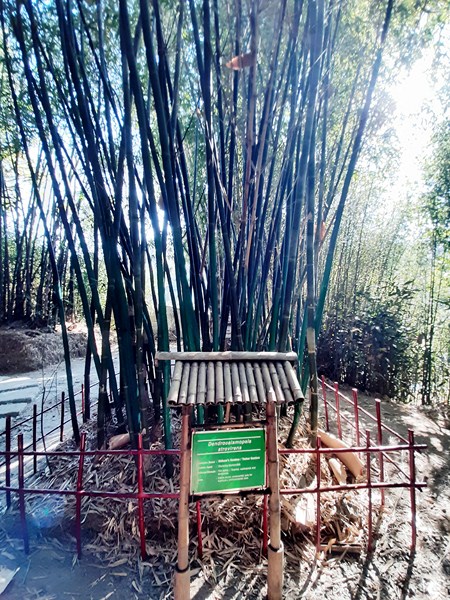
Oldham’s Bamboo (Dendrcalamopsis atrovirens), a large species of bamboo, has been introduced into cultivation around the world. It is densely foliated, growing up to 20 m. (65 ft.) tall in good conditions, and can have a diameter of up to 10 cms. (4 in.).
The farm is home to 21 different species of bamboos, with 17 temperate (monopodial) and 4 tropical (sympodial) varieties from China, some towering over 15 m. in height, that were planted in the park. They include:
- Alphone Karr Hedge Bamboo (Bambusa multiplex)
- Arrow Bamboo (Pseudosasa japonica)
- Black Bamboo (Phyllostachys nigra)
- Castillon Bamboo (Phyllostachys bambusoides)
- Female Bamboo (Bambusa balcooa)
- Fernleaf Hedge Bamboo (Bambusa multiplex)
- Fishpole Bamboo (Phyllostachys aurea)
- Giant Bamboo (Dendrocalamus asper)
- Giant Sour Bamboo (Acidosasa gigantea)
- Golden Chinese Timber Bamboo (Phyllostachys vivax)
- Hedge Bamboo (Bambusa glaucescens)
- Moso Bamboo (Phyllostachys heterocycla pubescens)
- Oldham’s Bamboo (Dendrcalamopsis atrovirens)
- Purple Bamboo (Chimonobambusa neopurpurea)
- Screen Bamboo (Plelobiastus chino)
- Spiraled Grass Bamboo (Plebobiastus gramineus)
- Sweet-Shoot Bamboo (Phyllostachys dulcis)
- Vivax Bamboo (Phyllostachys vivax)
- Yellow Striated Bamboo (Bambusa vulgaris)

Screen Bamboo (Plelobiastus chino), an excellent screen or hedge about 10 ft. tall, becomes very thick with leaves, and the canes grow close together. It is vigorous and tough.
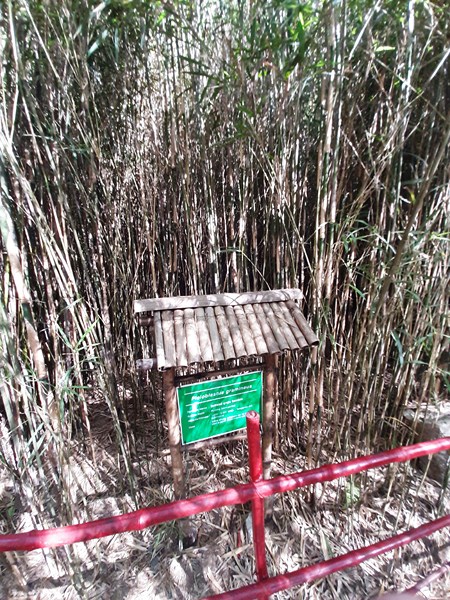
Spiraled Grass Bamboo (Plebobiastus gramineus), desirable for a thick screen, grows many canes in close proximity so that nothing can be seen through a hedge merely a foot or two thick. The long graceful leaves are distinctive.
Part of the National Greening Program, the bamboo plantation is located behind the seminary just past the basketball court. This is part of the 1 million hectare project of the ASEAN commitment of reforestation of 20 million hectares by year 2020.
A forum was conducted before and it was decided that this is the feasible area to put up a plantation. These bamboos were fit for tropical and high elevation places like Baguio and Benguet.
There are many benefits derived from bamboo, such as for climate change mitigation and livelihood generation. Bamboos, an erosion control mechanism in the Cordillera, are known to hold the soil because of its roots’ long reach as far as 20 kms. which is effective for erosion prevention and they multiply quickly. They also help in carbon sequestration and, in turn, releasing oxygen to the environment.
As you walk along the bamboos, you can feel that positive, refreshing feeling that the trees are providing. There are multi-levels, but the main walkway has the most beautiful view. Up the Cardio Trail, the bamboos were slowly replaced by large pine trees and led us into an open overlooking spot. There’s public restrooms and bamboo benches, available by the exit, where you can rest.
Baguio Bamboo Educational Demo Farm: St. Francis Xavier Senior-High Seminary, Purok Liteng, Brgy. Pacdal, Baguio City, 2600 Benguet. Mobile number: 0921 877 6655. Open Fridays, Saturdays and Sundays, 7:30 AM to 4:30 PM. Entrance is free but donations, for the upkeep of the sanctuary, are accepted. Pre-nuptial pictorials are not allowed on Saturdays and Sundays to avoid overcrowding. No drones are allowed.
How to Get There: the farm is a 15 to 20-min. drive from Burnham Park. They have a wide parking space. By public transportation, take a jeepney conveniently situated behind the Patriotic School along Harrison Road. The road leading to it is narrow and steep and the drop-off point for the park is right at the turning point.


